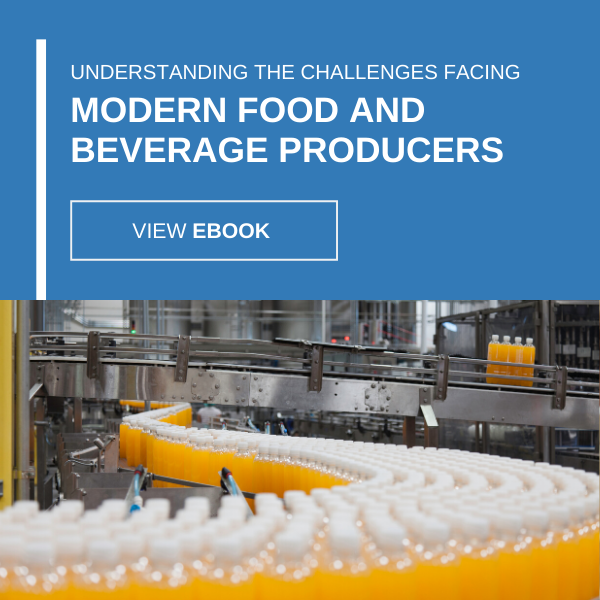
Prevent Allergen-Related Recalls with Intelligent Process Management
Recalls are on the rise in the food and beverage industry, but processors have the power to stem the tide by investing their time and energy into a renewed commitment to operational excellence.
Although recalls happen for myriad reasons, recalls related to undeclared ingredients remain a persistent threat throughout the sector second only to pathogen contamination, according to the Department of Agriculture Food Safety and Inspection Service. Between 2000 and 2016, 3 out of 10 recalls were the result of undeclared ingredients.
When businesses unwittingly fail to disclose the so-called “Big 8” allergens – milk, eggs, fish, crustacean shellfish, tree nuts, peanuts, wheat and soybeans – they expose trusting consumers to life-threatening dangers. So it’s no wonder why food and beverage companies will spend whatever it takes to avoid such risks. According to a study sponsored by the Grocery Manufacturers Association, a food industry trade group, the average cost of a single recall is $10 million in direct damages. This figure does not include indirect losses ranging from settlements from consumer class-action litigation, long-term reputational damage to the brand in question or issues faced during the recall recovery process, such as insurance rate increases and soured relationships with suppliers and vendors.
What can your food or beverage processing plant do immediately to prevent recalls related to undeclared allergens from wreaking havoc on your bottom line, customer loyalty and continued success?
Review labels against ingredients
Labeling errors, according to the aforementioned USDA FSIS study, represented 63 percent of all Big 8 recalls between 2005 and 2015. Combined with ingredient errors – formulation changes without updated labeling, etc. – the two caused three-quarters of all reported Big 8-related recalls during that time.
As such, food and beverage companies should perform a preemptive audit of all product labels by verifying them against actual ingredients. Stakeholders in this effort ought to pay close attention to ingredients that recently underwent reformulations or arrive at their facilities already processed. Although processors may have removed one allergen by way of a substitute, they may then inadvertently introduce new allergens or other contaminants. Other areas to address include:
Label language
Because the Food and Drug Administration does not preapprove food labels, it’s up to the food and beverage industry to keep up with current labeling regulations. Whether an organization chooses the phrase may contain milk or processed in a facility that also processes milk is the discretion of the labeler, provided it accurately portrays operations. But remember: No overly cautious language on the label compares to adhering to good manufacturing practices.

Subingredients
Companies must break down all ingredients listed on their labels to their most basic levels in order of predominance by weight. For example, the FDA recently sent a warning letter to a bakery in Massachusetts for not itemizing the sub-ingredients in its “Natural Sourdough Starter.” The bakery also included “love” as an ingredient. While a nice attempt at out-of-the-box marketing, there is no creative license when it comes to properly labeling ingredients. Be clear and precise.
Outsourced supplies
Third-party manufacturing is an excellent method for preventing cross-contamination at a facility, but it does not automatically free the processor from liability. To know for sure what substances all ingredients contain, food and beverage companies must establish good internal process controls supported by transparent supply chain relationships.
Investigate areas of possible incidental contact
Food and beverage plants should do everything in their power to isolate segments of their production lines where risk of incidental contact are high, not to mention any other areas unrelated to production where such accidents can occur.
But isolation isn’t limited to placing physical barriers between operations with and without allergens. These facilities also need to take a behavior-minded approach to process control:
- Target rework: Every time allergenic materials are handled, the risk of contamination increases. Employee must receive comprehensive training on how to perform processes involving allergens, but companies should also develop a standard strategy allergen-specific rework just in case.
- Use lockouts: Follow lockout/tagout procedures for any equipment that comes in contact with allergenic ingredients until staff can properly sanitize it. Similarly, establish strict rules about single-use protective materials, such as gloves.
- Visualize dangers: Create a system for drawing attention to all allergenic materials on the shop floor and equipment that regularly comes in contact with allergens.
Strengthening the resilience of your food or beverage company against allergen-related recalls may come at a costly premium if your teams don’t know how to roll-out initiatives efficiently. Talk to the operations management experts at USC Consulting Group to learn more.





